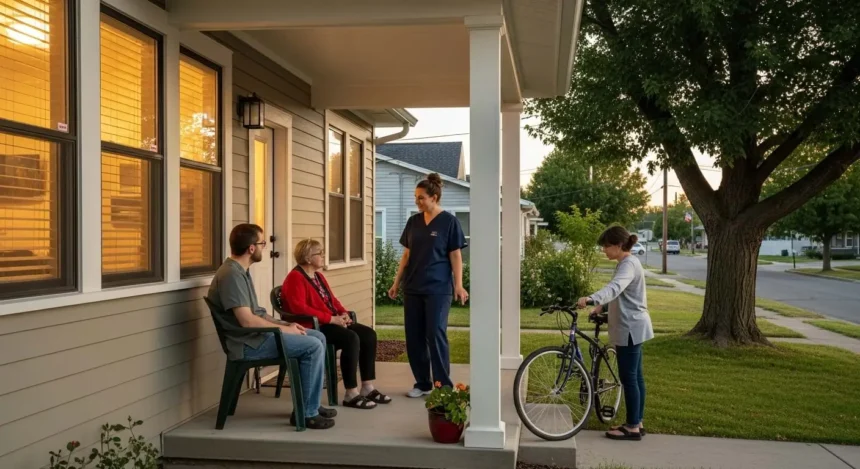Finding stable housing marks a significant step toward personal and financial independence. For many individuals facing life changes, the path from instability to permanent housing requires an intermediate solution. Transitional housing programs offer a structured environment, providing a bridge between emergency shelters and long-term, independent living. These programs are designed to help people develop the resources and skills needed to secure and maintain a stable home.
What Is Transitional Housing?
Transitional housing is a temporary accommodation that includes supportive services to help people achieve self-sufficiency. Unlike emergency shelters, which offer short-term stays, these programs typically provide housing for periods ranging from a few months to two years. The main goal is to prepare residents for a successful move into permanent housing. This preparation involves more than just providing a roof over their head.
These programs integrate housing with a variety of support services tailored to individual needs. Residents often receive case management, which helps them set and achieve personal goals. Services might include financial literacy training, employment assistance, and connections to community resources. The structured nature of transitional housing helps create a supportive and goal-oriented atmosphere for all participants.
Who is Eligible?
Eligibility for transitional housing varies by program and location, as each organization sets its own guidelines based on its mission and funding. Generally, these programs serve individuals and families who are experiencing homelessness or are at risk of becoming homeless but are ready to work toward independence. Applicants usually need to show a commitment to participating in the program’s supportive services.
While specific requirements differ, some common eligibility factors include:
- Individuals or families leaving emergency shelters.
- People recovering from substance use disorders.
- Veterans facing housing instability.
- Youth aging out of the foster care system.
- Survivors of domestic violence.
Prospective residents often go through an application and interview process. This helps program staff determine if the applicant is a good fit and if the services offered match their needs. Proof of income or a willingness to find employment might also be part of the criteria.
How Does Housing Promote Stability?
Secure housing provides the foundation people need to address other challenges in their lives. When a person has a safe place to live, they can focus on other goals, such as finding a job, managing their health, or pursuing education. Transitional housing programs foster this stability by removing the immediate stress of homelessness. This environment allows individuals to build routines and plan for the future.
The supportive services offered are a key component in promoting long-term stability. Case managers work with residents to create a personalized plan for self-sufficiency. This plan may include learning how to budget, building a positive rental history, and accessing healthcare services. By developing these practical life skills in a supportive setting, residents gain the confidence and competence needed to live independently after they leave the program.
Discuss Your Options
If you are facing housing instability, learning about your local options is a positive step forward. Transitional housing programs can provide the support and resources needed to build a more secure future for you and your family. Reach out to local social service agencies or housing authorities to ask about available programs in your area. Exploring these possibilities can help you find a path toward stable, permanent housing.





